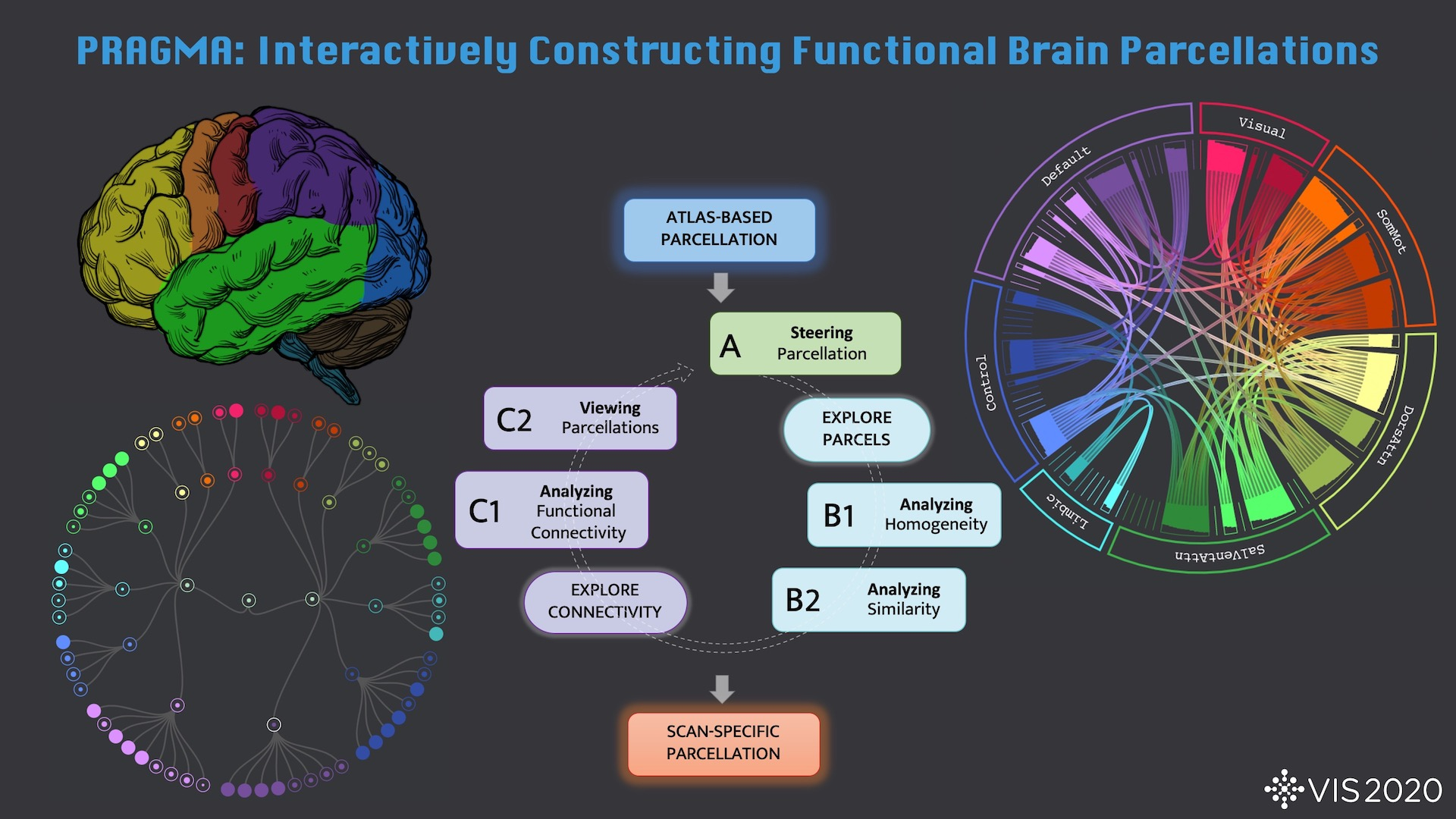Honorable Mention
PRAGMA: Interactively Constructing Functional Brain Parcellations
Roza Gunes Bayrak, Nhung Hoang, Colin Blake Hansen, Catie Chang, Matthew Berger
External link (DOI)
View presentation:2020-10-27T19:20:00ZGMT-0600Change your timezone on the schedule page
2020-10-27T19:20:00Z

Fast forward
Direct link to video on YouTube: https://youtu.be/vBRBa5t1LfM
Keywords
Human-centered modeling, neuroimage analysis, functional parcellation, brain mapping
Abstract
A prominent goal of neuroimaging studies is mapping the human brain, in order to identify and delineate functionally-meaningful regions and elucidate their roles in cognitive behaviors. These brain regions are typically represented by atlases that capture general trends over large populations. Despite being indispensable to neuroimaging experts, population-level atlases do not capture individual differences in functional organization. In this work, we present an interactive visualization method, PRAGMA, that allows domain experts to derive scan-specific parcellations from established atlases. PRAGMA features a user-driven, hierarchical clustering scheme for defining temporally correlated parcels in varying granularity. The visualization design supports the user in making decisions on how to perform clustering, namely when to expand, collapse, or merge parcels. This is accomplished through a set of linked and coordinated views for understanding the user's current hierarchy, assessing intra-cluster variation, and relating parcellations to an established atlas. We assess the effectiveness of PRAGMA through a user study with four neuroimaging domain experts, where our results show that PRAGMA shows the potential to enable exploration of individualized and state-specific brain parcellations and to offer interesting insights into functional brain networks.